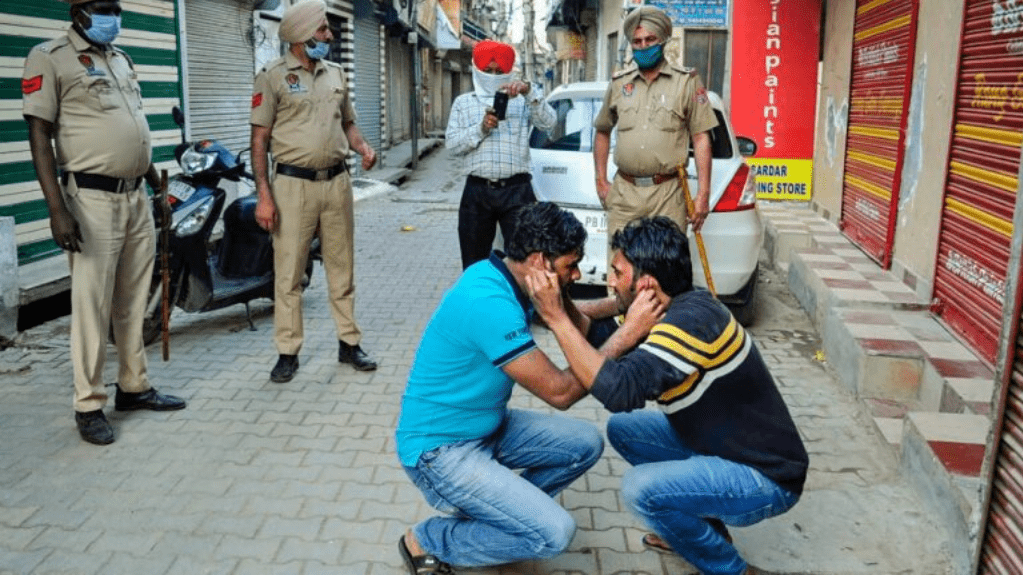We have now crossed the 100,000 mark. Every new day is beating the previous record of one day spike in the number of COVID-19 cases. The numbers refuse to budge. Lockdowns have gotten feebler every passing phase. The state leaderships which were collecting adulatory coins till now on social media from film stars, seem to be giving up in a very trumpesque manner. One look at different state governments tells you what they are keeping busy with. Fighting litigations to open Tasmac shops, fudging the numbers on coronavirus, choosing to deliberately get oblivious of the violations of social distancing and lockdown norms by the high and mighty, and cancelling emergency trains because the builders can decide the rights of a poor Indian in a closed door meeting with the Chief Minister, we have seen everything.
Considering the difficulty of our time, the socio-economic diversity of our country, and of course our population, the chinks we are developing are inevitable. In spite of these misdemeanours, the government and bureaucracy have been toiling to contain the pandemic. The pressure to do better than other affected countries is palpable on the face of our leaders. The inconsistencies that we have seen in our political class and bureaucracy is a reminder for us to notice similar patterns in citizens too. While many have cooperated with the law enforcement agencies and the local administration, a huge number for some reason, is determined to dilute all the efforts and our national discipline, assuming it exists.
Back in my hometown, I remember something distinctly from my childhood. I would watch these individuals boarding a bus and on being asked for the ticket charge, they would just utter the word ‘staff’. That was the magic word. Some conductors did not dig deeper than this. A few would ask for an identity card. This would invariably turn into some sort of argument. The word – staff, was just one word from the freeloader (tu jaanta nahi main kaun hoon) vocabulary. This is still common in many parts of our country. I am sure you have seen words like ‘Army’, ‘Police’ on motorbikes and cars. Those are declarations of authority. Even when these vehicles are not being driven by the original owners, these signs have the same power. The point is, once we are made aware of this sort of vocabulary, we use these words whenever we are bending the system for our benefit. In effect, most of the people on the streets are either powerful in some way or are pretending to be. Ask any dhaabawala how many policemen pay their bills.
Last week, I ventured out after about 10 days to get some vegetables and while I was picking my veggies, a woman appeared out from a car without a mask towards the shop. When I asked her about her mask, she went back reluctantly towards the car but came back empowered with the male company who was on the wheels. On being asked again, they went into an argument overkill to defend their choice – “you don’t tell me, who are you?”. All that did not surprise me. In fact, when I answered with – “I am a citizen of this country, and I have a right to point it out if you are doing something so wrong for public health”, she dug into her freeloader vocabulary and retorted – “I’m a doctor. So I know. You don’t tell me!” If only irony were an academic discipline, this lady would win a Nobel.
Delhi customs has confiscated illegal export consignment of PPE kits. Karnataka government has already received requests for opening up mosques for prayers from MLC C.M. Ibrahim. People are coming out in large numbers for religious congregations, Maharashtra is doing everything that could be seen as opposite of a lockdown. It is almost as if people are volunteering for herd immunity by infection. All my visits to the bazaar have brought me face to face with people who don’t care about following social distancing norms or wearing a mask. Closer home, a house had some religious ceremony and entertained guests over a period of 3 days. A neighbour has carried out a complete makeover of his house using around 5-7 workers every day of the lockdown. These workers took the masks from their pockets only when I happened to request them. At all other times, they stayed inside the pockets. Interestingly, the homeowners used masks for themselves. After initial prohibitions from the governments on spitting in public places, I had hoped for some change. I didn’t realise spitting is something that completes our Indianness.
I’m sure you must have come across such situations in your own outings during these lockdowns. Of course, I am assuming you are not the one violating these norms in the first place. Now that the governments have given up on the lockdown restrictions and we are on our own, it is perhaps time to look into our behaviour as individuals during the last couple of months. Our attitude, both at the beginning and now, can finally explain the ‘typical Indian’ problems. I list a few of them here –
- Why do we indulge in rash driving and honk like we are composing some Bollywood ‘item number’?
- Why does our saliva keep asking for ‘aazadi’ from us every time we come out in public spaces?
- Why do our public hospitals spread more diseases than they cure?
- Why does corruption fit so well under ‘essential services’ for us?
- Why have our ponds, lakes, and rivers shapeshifted into exaggerated drains?
- Why do we smoke, pee everywhere apart from the places designated for them?
- Why queues are synonymous with waterboarding for Indians?
- Why do Indian women get the definition of women-empowerment wrong so often?
- Why do Indian men deny the existence of condoms?
When I met these defaulters during my lockdown outings, most of the responses betrayed a sense of invincibility, like ‘it’s nothing, it won’t happen to me’. Another response tried to tell me that since I was safe by following the rules, I should keep shut and not bother others. It is not innocence. It is not any sort of self-sacrifice. It is just a refusal to fall in line, a refusal of responsibility. We do not care. We are great at throwing the blame on someone else. It’s not that we don’t care at all, we do. In fact, as Manu Joseph puts it, we have ‘immense stamina for useless issues’. For example, we care enough to slap a film-maker because his film hurts our group-pride. However, no amount of gutkha spitting hurts our group pride because we haven’t yet identified with any group that takes offence for gutkha spitting. Of course, Maharana Pratap didn’t sacrifice his life fighting the gutkha spewers, how can we take offence for that then?
The group that is still largely unrealized and unknown in our land is called ‘enlightened citizenry’, a concept discussed in detail by Swami Ranganathananda in his lecture and now book on Enlightened Citizenship and our Democracy. An individual’s awareness of his social responsibility is at the centre of such a citizenship. Since we have not yet understood this difference between an ordinary ‘adult citizenship’ and an ‘enlightened’ one, our other group associations dominate enlightened citizenry for much of our lifetime. It is up to us then to step back every time our pride is wounded and identify the group we are associating with to inflict this wound upon ourselves. If we find that this group is anything other than ‘enlightened citizenry’, we have our answer to most of the problems that begin with ‘a typical Indian..’.
Cover Image: Policemen force two men to do sit ups for flouting the lockdown rules, at Dharampura Bazar in Patiala on 24 March 2020 | PTI














